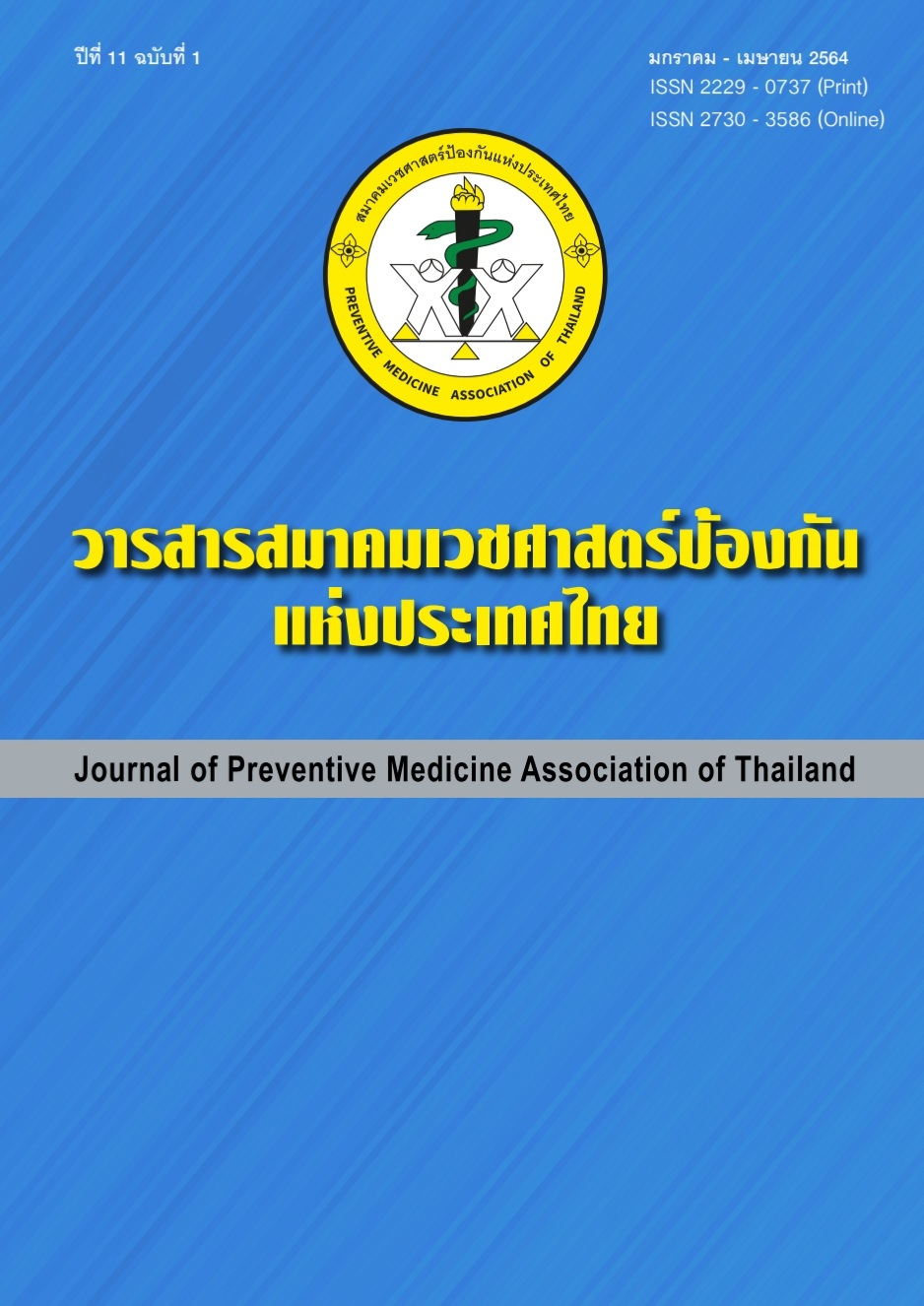The Efficacy of Medical Advice Forms for Patients Post Diagnosis in the Accidents and Emergency Department of Phra Nakhon Si Ayutthaya Hospital
Keywords:
Emergency department, Discharge instructionAbstract
Phra Nakhon Si Ayutthaya Hospital has approximately 50,000 patients receiving treatment at the Emergency Department annually. Therefore, physicians must provide treatment for these patients in accordance with the responsibilities curtailed with the position to provide care for accident victims and patients requiring emergency services due to various diseases in addition to also providing care for patients afflicted with common diseases during their non-official time. Consequentially, physicians have very limited time to discuss with patients and their families about their health. Due to this restricted time, there can be confusion and misunderstandings regarding their diseases or symptoms that may easily occur. Hence, the researcher would like to develop a tool to increase the efficiency in communicating with patients by providing them with a medical advice form that relates the correct and accurate information concerning their disease and symptoms. This is a prospective study consisting of 186 cases divided into 2 groups as the study population. The experimental group, comprised of 93 cases, will receive the medical advice form before being discharged. The control group which also consists of 93 cases will not be receiving the medical advice form before being discharged. The results of this study found that: before receiving the medical advice form, patients from both groups are able to relate their diagnosis 93.5% and 95.7% respectively (P-value: 0.516). After the research was conducted, the experimental group is able to relate their diagnosis correctly at a higher percentage, 91.4%, as opposed to the control group at 74.2% (P-value: 0.002). Thus, the differences between the two groups are statistically significant.
References
Sheikh H, Brezar A, Dzwonek A, Yau L, Calder LA. Patient understanding of discharge instructions in the emergency department: do different patients need different approaches? Int J Emerg Med 2018;11:5.
Powers RD. Emergency department patient literacy and the readability of patient-directed materials. Ann Emerg Med 1988;17:124–6.
Spandorfer JM, Karras DJ, Hughes LA, Caputo C. Comprehension of discharge instructions by patients in an urban emergency department. Ann Emerg Med 1995;25:71–4.
Crane JA. Patient comprehension of doctor-patient communication on discharge from the emergency department. J Emerg Med 1997;15:1–7.
Logan PD, Schwab RA, Salomone JA 3rd, Watson WA. Patient understanding of emergency department discharge instructions. South Med J 1996;89:770-4.
Jolly BT, Scott JL, Feied CF, Sanford SM. Functional illiteracy among emergency department patients: a preliminary study. Ann Emerg Med 1993;22:573–8.
Kristen G, Michele H, et al., Patient comprehension of emergency department care and instructions: are patients aware of when they do not understand? Ann Emerg Med 2009;53:454-461.e15.
Ashbrook L, Mouran M, Sehgal N. Communicating discharge instructions to patients: A survey of nurse, intern, and hospitalist practices. J Hosp Med 2013;8:36-41.
Rhodes KV, Vieth T, He T, Miller A, Howes DS, Bailey O, et al. Resuscitating the physician-patient relationship: emergency department communication in an academic medical center. Ann Emerg Med 2004;44:262-7.
Ginde AA, Pallin DJ, Camargo CA Jr. Hospitalization and discharge education of emergency department patients with hypoglycemia. Diabetes Educ 2008;34:683-91.
Jolly BT, Scott JL, Sanford SM. Simplification of emergency department discharge instructions improves patient comprehension. Ann Emerg Med 1995;26:443–6.
Al-Harthy N, Sudersanadas KM, Al-Mutairi M, Vasudevan S, Saleh GB, Al-Mutairi M, et al. Efficacy of patient discharge instructions: A pointer toward caregiver friendly communication methods from pediatric emergency personnel. J Family community Med 2016;23:155-60.
Vashi A, Rhodes KV. “Sign right here and you’re good to go”: a content analysis of audiotaped emergency department discharge instructions. Ann Emerg Med 2011;57:315-22.
Taylor DM, Cameron P. Discharge instructions for emergency department patients: what should we provide? J Accid Emerg Med 2000;17:86-90.
Wilkin ZL. Effects of video discharge instructions on patient understanding: A prospective, randomized trial. Adv Emerg Nurs J 2020;42:71-8
Vashi A, Rhodes KV. “Sign right here and you’re good to go”: a content analysis of audiotaped emergency department discharge instructions. Ann Emerg Med 2011;57:315-22.
Maloney LR, Weiss ME, Patients' perceptions of hospital discharge informational content. Clin Nurs Res 2008;17:200-19.
Karliner LS, Andrew A, Napoles A, Schillinger D, Nickleach D, Perex-Stable EJ. Language barriers and understanding of hospital discharge instructions. Med Care 2012;50:283-9.
Strunin L, Stone M, Jack B. Understanding rehospitalization risk: can hospital discharge be modified to reduce recurrent hospitalization? J Hosp Med 2007; 2:297-304.
Rhodes KV, Vieth T, He T, Miller A, Howes DS, Bailey O, et al. Resuscitating the physician-patient relationship: emergency department communication in an academic medical center. Ann Emerg Med 2004;44:262-7.
Downloads
Published
How to Cite
Issue
Section
License
บทความที่ลงพิมพ์ในวารสารเวชศาสตร์ป้องกันแห่งประเทศไทย ถือเป็นผลงานวิชาการ งานวิจัย วิเคราะห์ วิจารณ์ เป็นความเห็นส่วนตัวของผู้นิพนธ์ กองบรรณาธิการไม่จำเป็นต้องเห็นด้วยเสมอไปและผู้นิพนธ์จะต้องรับผิดชอบต่อบทความของตนเอง






